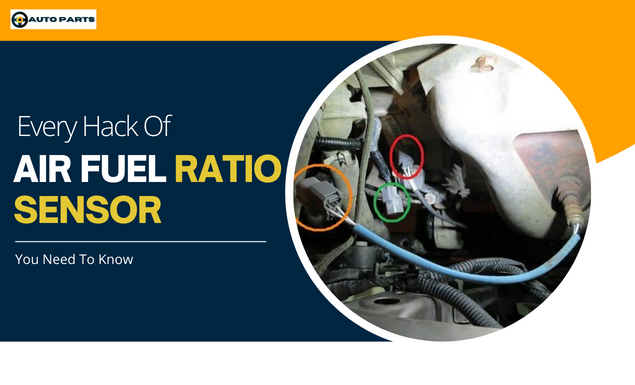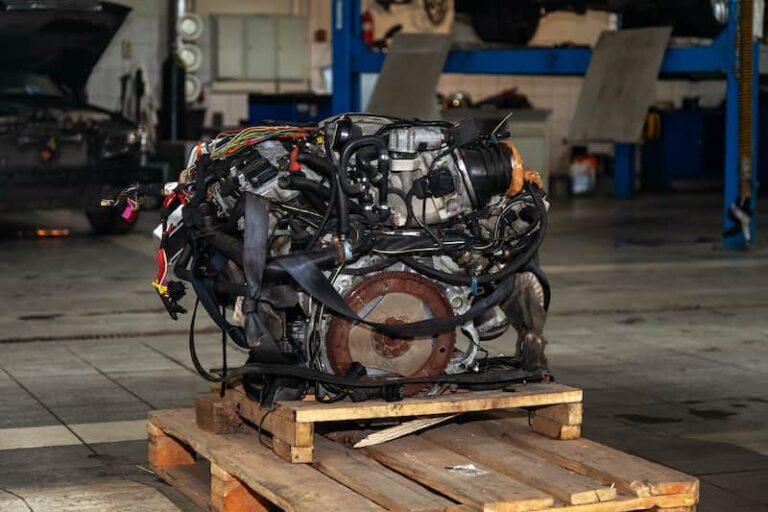How long do air fuel ratio sensor last? The oxygen sensor can be found in the exhaust pipe. It sends data to the engine so that the mixture is in alteration if it is too rich or too lean. The air-fuel ratio sensor can fail because it is used every time you drive and is exposed to contaminants. Typically, your air fuel ratio sensor will last between three and five years.
Table of Contents
ToggleIs Air Fuel Ratio Sensor same as O2 sensor?

(air fuel ratio sensor vs oxygen sensor) A conventional O2 sensor cannot read a much wider and leaner variety of fuel mixtures than an air/fuel sensor. That is why they are also known as “wideband” O2 sensors.
Another distinction is that A/F sensors do not generate a voltage signal that abruptly changes on either side of Lambda when the air/fuel ratio becomes rich or lean.
When the fuel mixture changes, a conventional O2 sensor will produce either a rich (0.8 volt) or a poor (0.2 volts) reading. In comparison, an air fuel ratio sensor generates a varying current signal that differs in proportion to the amount of combustible oxygen in the exhaust.
How do I fix the Air Fuel Ratio?
An air/fuel ratio sensor mix screw is a unique screw on an engine’s carburetor that controls how much air is mixed with the fuel. This screw controls how quickly or slowly an engine idles and how smoothly it runs.
The basic procedure for adjusting an air fuel mixture screw on a small engine is the same whether it’s on a car, motorbike, or other types of engine. Make adjustments while the car engine overheating and running. Set the screw to the position where the transmission idles most smoothly and does not sound rough or irregular to balance the fuel mixture and give the engine an ideal air-fuel ratio sensor.

Accessing the Air Fuel Mixture Screw
Start the engine and wait 5 minutes for it to warm up. Insert the key into the ignition. Allow the engine to warm up to the average operating temperature for about 5 minutes. Keep the engine running after it has warmed up.
Always make air fuel mixture screw changes with the engine warm and running so you can hear how the changes affect the engine’s idle speed.
It is in the observation that this procedure applies to any engine with an air-fuel mixture screw. It could be a vehicle with a carburetor, such as a car, motorcycle, ATV, or anything else.
Look for the carburetor near the engine’s air filter. Examine the machine for the round or cone-shaped air filter. The air filter is attached to the carburetor, which is an engine component.
A car’s air filter could be significant and round. It is usually mounted on top of the carburetor.
The air filter on a motorcycle usually comes off the sides of the engine and faces the back of the bike.
Balancing the Fuel Mixture
Turn the screw counterclockwise until the engine starts squealing. Tighten the screw with a flathead screwdriver. Listen to the engine’s idle sound & stop turning the screw when it starts to make a rough rising and falling sound rather than it’s typical idling sound.
Tightening the screw reduces the amount of fuel flowing to the engine and weakens the air-fuel mixture.
Tightening the screw also means making the fuel mixture leaner, which lowers the idle RPMs of the engine.
A lean fuel mixture causes the engine to use less fuel than it requires to run efficiently. Because there is more friction among moving parts and the engine operates at a higher temperature, this can cause engine damage.
Loosen the screw and count the rotations until the engine makes an unusual noise. Turn the screw counterclockwise with your flathead screwdriver, counting the number of cycles as you go. Listen to the engine idling and stop turning the screw when the idle sound becomes irregular, as if the engine is revving too quickly.
How do I know if my air-fuel ratio is off?
If an air fuel ratio sensor becomes “lazy,” it will send a delayed signal to the computer, resulting in an overall delayed response for the engine. When accelerating, the vehicle may exhibit a sluggish or delayed response and a noticeable car losing its power while accelerating.
Loosening the screw increases fuel flow to the engine and strengthens the air-fuel mixture.
Loosening the screw also refers to making the fuel mixture richer, which raises the idle RPMs of the engine.
Running a rich fuel mixture induces the engine to consume more fuel than is required for efficient operation.
Place the screw in the middle of the rough and irregular sounds. Return the screw clockwise until it is roughly in the middle of where the engine’s idle sounds irregular and uneven. This will maintain the engine’s idle speed.
For example, if you did turn the screw two full turns counterclockwise from where the engine’s idle began to sound rough, now turn the screw one complete turn clockwise.
Make necessary changes. To find the smoothest idle speed, turn the knob half a turn in either direction. Turn the screw counterclockwise and clockwise 1/2 turn from the center position and listen for the idle sound. To balance the fuel mixture, turn the screw to the part where the engine’s idle sounds most even and smooth.
Turning the screw 1/2 turn in either direction may cause the engine to sound rougher or even more irregular, simply returning the screw to the middle position.
This procedure is also known as having to balance the idle mixture. Buy tested used car engine at low prices from Auto vehicle parts.
FAQs
Can you clean an air-fuel ratio sensor?
You may have received instructions on washing an oxygen sensor online. Typically, these instructions are pretty detailed, describing how to carefully remove the sensor, clean it, and return the unit to its original location.
This information is misleading because oxygen sensors are suitable for replacement rather than cleaning. Automobile manufacturers endorse the cleaning of sensors. If you discover your vehicle has a faulty air fuel ratio sensor, it’s time to replace
What happens if you don’t replace oxygen sensor?
(air fuel ratio sensor symptoms) When an O2 sensor fails, it is no longer capable of triggering correct fuel injection levels, regulating exhaust gas, or ensuring efficient fuel combustion. As a result, the vehicle may emit damaging environmental pollutants and carbon-based compounds and have poor engine performance.
How do you reset an air-fuel sensor?
- Start the engine and allow it to warm up to the average operating temperature.
- Turn off the ignition switch.
- Disconnect the harness connector for the mass air fuel ratio sensor.
- Start the engine and wait at least 5 seconds for it to idle.
- Stop the machine and reconnect the harness connector for the mass air flow sensor.
- Check that DTC P0102 is displayed.
- Clear the DTC memory.
Where is the air-fuel ratio sensor located?
The air fuel ratio sensor can be found in the exhaust manifold or the front exhaust pipe. Air Fuel Ratio Sensor detects the air in your combustion and uses that data to calculate your current air fuel ratio sensor.










